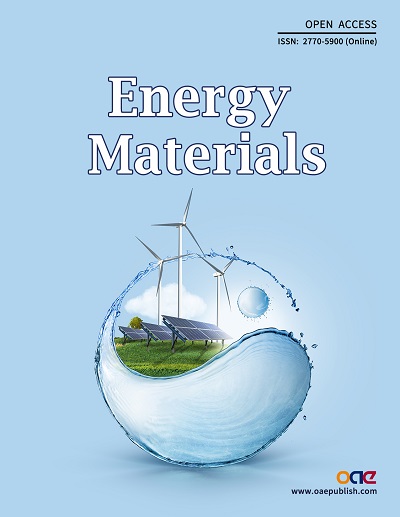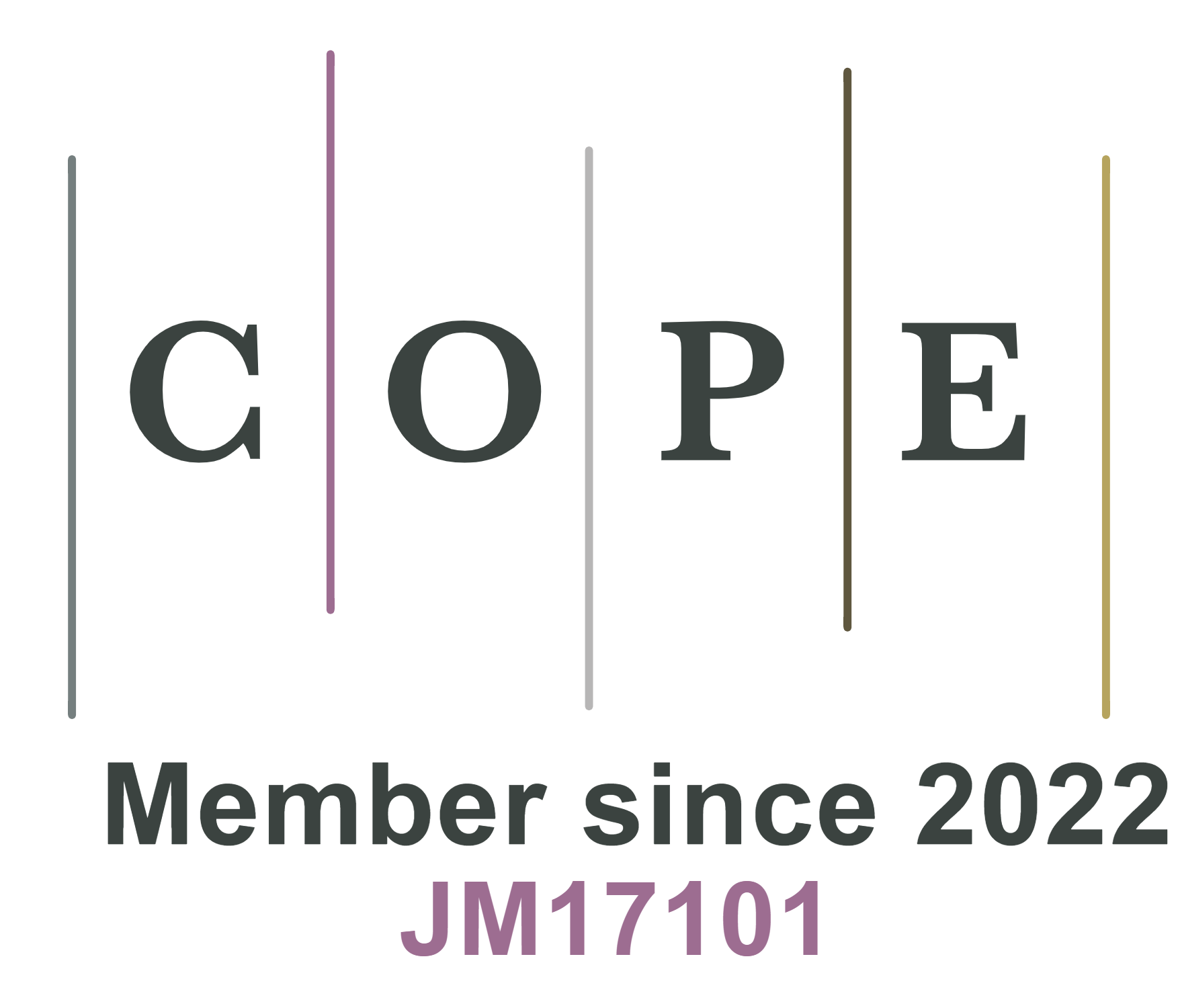REFERENCES
1. Shen X, Zhang R, Shi P, Chen X, Zhang Q. How does external pressure shape Li dendrites in Li metal batteries? Adv Energy Mater 2021;11:2003416.
2. Lin D, Liu Y, Chen W, et al. Conformal lithium fluoride protection layer on three-dimensional lithium by nonhazardous gaseous reagent freon. Nano Lett 2017;17:3731-7.
3. Kim US, Shin CB, Kim C. Effect of electrode configuration on the thermal behavior of a lithium-polymer battery. J Power Sources 2008;180:909-16.
4. Xu G, Li J, Wang C, et al. The formation/decomposition equilibrium of Lih and its contribution on anode failure in practical lithium metal batteries. Angew Chem Int Ed 2021;60:7770-6.
5. Kazyak E, Wang MJ, Lee K, et al. Understanding the electro-chemo-mechanics of Li plating in anode-free solid-state batteries with operando 3D microscopy. Matter 2022;5:3912-34.
6. Dollé M, Sannier L, Beaudoin B, Trentin M, Tarascon J. Live scanning electron microscope observations of dendritic growth in lithium/polymer cells. Electrochem Solid-State Lett 2002;5:A286.
7. Xu X, Liu Y, Kapitanova OO, Song Z, Sun J, Xiong S. Electro-chemo-mechanical failure of solid electrolytes induced by growth of internal lithium filaments. Adv Mater 2022;34:e2207232.
8. Gao X, Zhou Y, Han D, et al. Thermodynamic understanding of Li-dendrite formation. Joule 2020;4:1864-79.
9. Hong S, Kim J, Lim S, Yoon WY. Surface characterization of emulsified lithium powder electrode. Electrochim Acta 2004;50:535-9.
10. Xiao Y, Xu R, Xu L, Ding J, Huang J. Recent advances in anion-derived SEIs for fast-charging and stable lithium batteries. Energy Mater 2022;1:100013.
11. Chazalviel J. Electrochemical aspects of the generation of ramified metallic electrodeposits. Phys Rev A 1990;42:7355.
12. Khurana R, Schaefer JL, Archer LA, Coates GW. Suppression of lithium dendrite growth using cross-linked polyethylene/poly(ethylene oxide) electrolytes: a new approach for practical lithium-metal polymer batteries. J Am Chem Soc 2014;136:7395-402.
13. Zhang C, Liu S, Ma Z, Ranjith P. Combined micro-proppant and supercritical carbon dioxide (SC-CO2) fracturing in shale gas reservoirs: a review. Fuel 2021;305:121431.
14. Bai P, Li J, Brushett FR, Bazant MZ. Transition of lithium growth mechanisms in liquid electrolytes. Energy Environ Sci 2016;9:3221-9.
15. Arakawa M, Tobishima S, Nemoto Y, Ichimura M, Yamaki J. Lithium electrode cycleability and morphology dependence on current density. J Power Sources 1993;43:27-35.
16. Chen L, Fan X, Ji X, Chen J, Hou S, Wang C. High-energy Li metal battery with lithiated host. Joule 2019;3:732-44.
17. Aryanfar A, Brooks DJ, Colussi AJ, Hoffmann MR. Quantifying the dependence of dead lithium losses on the cycling period in lithium metal batteries. Phys Chem Chem Phys 2014;16:24965-70.
18. Qin K, Holguin K, Mohammadiroudbari M, et al. Strategies in structure and electrolyte design for high-performance lithium metal batteries. Adv Funct Mater 2021;31:2009694.
19. Wood KN, Noked M, Dasgupta NP. Lithium metal anodes: toward an improved understanding of coupled morphological, electrochemical, and mechanical behavior. ACS Energy Lett 2017;2:664-72.
20. Wang Q, Liu B, Shen Y, et al. Confronting the challenges in lithium anodes for lithium metal batteries. Adv Sci 2021;8:e2101111.
21. Lu D, Shao Y, Lozano T, et al. Failure mechanism for fast-charged lithium metal batteries with liquid electrolytes. Adv Energy Mater 2015;5:1400993.
22. Cao W, Lu J, Zhou K, et al. Organic-inorganic composite SEI for a stable Li metal anode by in-situ polymerization. Nano Energy 2022;95:106983.
23. Ye H, Zheng Z, Yao H, et al. Guiding uniform Li plating/stripping through lithium-aluminum alloying medium for long-life Li metal batteries. Angew Chem Int Ed 2019;131:1106-11.
24. Li X, Zheng J, Ren X, et al. Dendrite-free and performance-enhanced lithium metal batteries through optimizing solvent compositions and adding combinational additives. Adv Energy Mater 2018;8:1703022.
25. Ko J, Yoon YS. Recent progress in LiF materials for safe lithium metal anode of rechargeable batteries: is LiF the key to commercializing Li metal batteries? Ceram Int 2019;45:30-49.
26. Monroe C, Newman J. The impact of elastic deformation on deposition kinetics at lithium/polymer interfaces. J Electrochem Soc 2005;152:A396.
27. Zhang X, Xiang Q, Tang S, Wang A, Liu X, Luo J. Long cycling life solid-state Li metal batteries with stress self-adapted Li/garnet interface. Nano Lett 2020;20:2871-8.
28. Bi Z, Guo X. Solidification for solid-state lithium batteries with high energy density and long cycle life. Energy Mater 2022;2:200011.
29. Zheng ZJ, Ye H, Guo ZP. Recent progress in designing stable composite lithium anodes with improved wettability. Adv Sci 2020;7:2002212.
30. Huo H, Liang J, Zhao N, et al. Dynamics of the garnet/Li interface for dendrite-free solid-state batteries. ACS Energy Lett 2020;5:2156-64.
31. Zhu P, Yan C, Dirican M, et al. Li0.33La0.557TiO3 ceramic nanofiber-enhanced polyethylene oxide-based composite polymer electrolytes for all-solid-state lithium batteries. J Mater Chem A 2018;6:4279-85.
32. Tu Z, Kambe Y, Lu Y, Archer LA. Nanoporous polymer-ceramic composite electrolytes for lithium metal batteries. Adv Energy Mater 2014;4:1300654.
33. Zhou D, Liu R, He Y, et al. SiO 2 hollow nanosphere-based composite solid electrolyte for lithium metal batteries to suppress lithium dendrite growth and enhance cycle life. Adv Energy Mater 2016;6:1502214.
34. Tikekar MD, Choudhury S, Tu Z, Archer LA. Design principles for electrolytes and interfaces for stable lithium-metal batteries. Nat Energy 2016;1:16114.
35. Pan Q, Smith DM, Qi H, Wang S, Li CY. Hybrid electrolytes with controlled network structures for lithium metal batteries. Adv Mater 2015;27:5995-6001.
36. Zhao Y, Wu C, Peng G, et al. A new solid polymer electrolyte incorporating Li10GeP2S12 into a polyethylene oxide matrix for all-solid-state lithium batteries. J Power Sources 2016;301:47-53.
37. Chen B, Huang Z, Chen X, et al. A new composite solid electrolyte PEO/Li10GeP2S12/SN for all-solid-state lithium battery. Electrochim Acta 2016;210:905-14.
38. Zhao Y, Huang Z, Chen S, et al. A promising PEO/LAGP hybrid electrolyte prepared by a simple method for all-solid-state lithium batteries. Solid State Ion 2016;295:65-71.
39. Zhou W, Wang S, Li Y, Xin S, Manthiram A, Goodenough JB. Plating a dendrite-free lithium anode with a polymer/ceramic/polymer sandwich electrolyte. J Am Chem Soc 2016;138:9385-8.
40. Lin D, Liu W, Liu Y, et al. High ionic conductivity of composite solid polymer electrolyte via in situ synthesis of monodispersed SiO2 nanospheres in poly(ethylene oxide). Nano Lett 2016;16:459-65.
41. Wang W, Yi E, Fici AJ, Laine RM, Kieffer J. Lithium ion conducting poly(ethylene oxide)-based solid electrolytes containing active or passive ceramic nanoparticles. J Phys Chem C 2017;121:2563-73.
42. Liu W, Liu N, Sun J, et al. Ionic conductivity enhancement of polymer electrolytes with ceramic nanowire fillers. Nano Lett 2015;15:2740-5.
43. Liu W, Lin D, Sun J, Zhou G, Cui Y. Improved lithium ionic conductivity in composite polymer electrolytes with oxide-ion conducting nanowires. ACS Nano 2016;10:11407-13.
44. Fu KK, Gong Y, Dai J, et al. Flexible, solid-state, ion-conducting membrane with 3D garnet nanofiber networks for lithium batteries. Proc Natl Acad Sci USA 2016;113:7094-9.
45. Hagen M, Dörfler S, Althues H, et al. Lithium-sulphur batteries-binder free carbon nanotubes electrode examined with various electrolytes. J Power Sources 2012;213:239-48.
46. Wang Q, Jin J, Wu X, Ma G, Yang J, Wen Z. A shuttle effect free lithium sulfur battery based on a hybrid electrolyte. Phys Chem Chem Phys 2014;16:21225-9.
47. Wang L, Wang Y, Xia Y. A high performance lithium-ion sulfur battery based on a Li2S cathode using a dual-phase electrolyte. Energy Environ Sci 2015;8:1551-8.
48. Yu X, Bi Z, Zhao F, Manthiram A. Hybrid lithium-sulfur batteries with a solid electrolyte membrane and lithium polysulfide catholyte. ACS Appl Mater Interfaces 2015;7:16625-31.
49. Busche MR, Drossel T, Leichtweiss T, et al. Dynamic formation of a solid-liquid electrolyte interphase and its consequences for hybrid-battery concepts. Nat Chem 2016;8:426-34.
50. Tsai CL, Roddatis V, Chandran CV, et al. Li7La3Zr2O12 interface modification for Li dendrite prevention. ACS Appl Mater Interfaces 2016;8:10617-26.
51. Cai M, Lu Y, Su J, et al. In situ lithiophilic layer from H+/Li+ exchange on garnet surface for the stable lithium-solid electrolyte interface. ACS Appl Mater Interfaces 2019;11:35030-8.
52. Shen K, Wang Z, Bi X, et al. Magnetic field-suppressed lithium dendrite growth for stable lithium-metal batteries. Adv Energy Mater 2019;9:1900260.
53. Sheng O, Zheng J, Ju Z, et al. In situ construction of a LiF-enriched interface for stable all-solid-state batteries and its origin revealed by Cryo-TEM. Adv Mater 2020;32:e2000223.
54. Aurbach D, Gofer Y, Ben-zion M, Aped P. The behaviour of lithium electrodes in propylene and ethylene carbonate: Te major factors that influence Li cycling efficiency. J Electroanal Chem 1992;339:451-71.
55. Shiraishi S, Kanamura K, Takehara Z. Surface condition changes in lithium metal deposited in nonaqueous electrolyte containing HF by dissolution-deposition cycles. J Electrochem Soc 1999;146:1633.
57. Vega JA, Zhou J, Kohl PA. Electrochemical comparison and deposition of lithium and potassium from phosphonium- and ammonium-TFSI ionic liquids. J Electrochem Soc 2009;156:A253.
58. Morita M, Aoki S, Matsuda Y. Ac imepedance behaviour of lithium electrode in organic electrolyte solutions containing additives. Electrochim Acta 1992;37:119-23.
59. Zhang X, Cheng X, Chen X, Yan C, Zhang Q. Fluoroethylene carbonate additives to render uniform Li deposits in lithium metal batteries. Adv Funct Mater 2017;27:1605989.
60. Stark JK, Ding Y, Kohl PA. Dendrite-free electrodeposition and reoxidation of lithium-sodium alloy for metal-anode battery. J Electrochem Soc 2011;158:A1100.
61. Han X, Gong Y, Fu KK, et al. Negating interfacial impedance in garnet-based solid-state Li metal batteries. Nat Mater 2017;16:572-9.
62. van den Broek J, Afyon S, Rupp JLM. Interface-engineered all-solid-state Li-ion batteries based on garnet-type fast Li+ conductors. Adv Energy Mater 2016;6:1600736.
63. Luo W, Gong Y, Zhu Y, et al. Transition from superlithiophobicity to superlithiophilicity of garnet solid-state electrolyte. J Am Chem Soc 2016;138:12258-62.
64. Wang C, Gong Y, Liu B, et al. Conformal, nanoscale ZnO surface modification of garnet-based solid-state electrolyte for lithium metal anodes. Nano Lett 2017;17:565-71.
65. Xiao Z, Zhou NY, Wang X, et al. Dual-layered 3D composite skeleton enables spatially ordered lithium plating/stripping for lithium metal batteries with ultra-low N/P ratios. ACS Appl Energy Mater 2022;5:14071-80.
66. Sun B, Fang M, Huang Z, Wu H. Robust current collector promoting the li metal anode cycling with appropriate interspaces. J Electrochem Soc 2018;165:A2026.
67. Li C, Zhang X, Zhu Y, et al. Modulating the lithiophilicity at electrode/electrolyte interface for high-energy Li-metal batteries. Energy Mater 2022;1:100017.
68. Xiong X, Qiao Q, Zhou Q, et al. Constructing a lithiophilic polyaniline coating via in situ polymerization for dendrite-free lithium metal anode. Nano Res 2023;16:8448-56.
69. Wang T, Liu X, Wang Y, Fan L. High areal capacity dendrite-free Li anode enabled by metal-organic framework-derived nanorod array modified carbon cloth for solid state Li metal batteries. Adv Funct Mater 2021;31:2001973.
70. Ji X, Liu D, Prendiville DG, Zhang Y, Liu X, Stucky GD. Spatially heterogeneous carbon-fiber papers as surface dendrite-free current collectors for lithium deposition. Nano Today 2012;7:10-20.
71. Jin C, Sheng O, Luo J, et al. 3D lithium metal embedded within lithiophilic porous matrix for stable lithium metal batteries. Nano Energy 2017;37:177-86.
72. Zhang R, Cheng XB, Zhao CZ, et al. Conductive nanostructured scaffolds render low local current density to inhibit lithium dendrite growth. Adv Mater 2016;28:2155-62.
73. Lu LL, Ge J, Yang JN, et al. Free-standing copper nanowire network current collector for improving lithium anode performance. Nano Lett 2016;16:4431-7.
74. Yang CP, Yin YX, Zhang SF, Li NW, Guo YG. Accommodating lithium into 3D current collectors with a submicron skeleton towards long-life lithium metal anodes. Nat Commun 2015;6:8058.
75. Yan K, Lu Z, Lee H, et al. Selective deposition and stable encapsulation of lithium through heterogeneous seeded growth. Nat Energy 2016;1:16010.
76. Zhang Y, Liu B, Hitz E, et al. A carbon-based 3D current collector with surface protection for Li metal anode. Nano Res 2017;10:1356-65.
77. Chen Y, Wang Z, Li X, et al. Li metal deposition and stripping in a solid-state battery via Coble creep. Nature 2020;578:251-5.
79. Liu L, Yin Y, Li J, et al. Free-Standing hollow carbon fibers as high-capacity containers for stable lithium metal anodes. Joule 2017;1:563-75.
80. Liu W, Lin D, Pei A, Cui Y. Stabilizing lithium metal anodes by uniform Li-ion flux distribution in nanochannel confinement. J Am Chem Soc 2016;138:15443-50.
81. Zhang Y, Luo W, Wang C, et al. High-capacity, low-tortuosity, and channel-guided lithium metal anode. Proc Natl Acad Sci USA 2017;114:3584-9.
82. Liu Y, Lin D, Liang Z, Zhao J, Yan K, Cui Y. Lithium-coated polymeric matrix as a minimum volume-change and dendrite-free lithium metal anode. Nat Commun 2016;7:10992.
83. Go W, Kim MH, Park J, et al. Nanocrevasse-rich carbon fibers for stable lithium and sodium metal anodes. Nano Lett 2019;19:1504-11.
84. Lin D, Liu Y, Liang Z, et al. Layered reduced graphene oxide with nanoscale interlayer gaps as a stable host for lithium metal anodes. Nat Nanotechnol 2016;11:626-32.
85. Liao C, Wang W, Han L, et al. A flame retardant sandwiched separator coated with ammonium polyphosphate wrapped by SiO2 on commercial polyolefin for high performance safety lithium metal batteries. Appl Mater Today 2020;21:100793.
86. Xu L, Daphne Ma XY, Wang W, Liu J, Wang Z, Lu X. Polymeric one-side conductive janus separator with preferably oriented pores for enhancing lithium metal battery safety. J Mater Chem A 2021;9:3409-17.
87. Liao C, Wang W, Wang J, et al. Magnetron sputtering deposition of silicon nitride on polyimide separator for high-temperature lithium-ion batteries. J Energy Chem 2021;56:1-10.
88. Kim S, Kang HS, Sohn E, Chang B, Park IJ, Lee SG. High discharge energy density and efficiency in newly designed PVDF@SiO2-PVDF composites for energy capacitors. ACS Appl Energy Mater 2020;3:8937-45.
89. Shayapat J, Chung OH, Park JS. Electrospun polyimide-composite separator for lithium-ion batteries. Electrochim Acta 2015;170:110-21.
90. Kang G, Cao Y. Application and modification of poly(vinylidene fluoride) (PVDF) membranes - a review. J Membr Sci 2014;463:145-65.
91. Wang W, Yuen ACY, Yuan Y, et al. Nano architectured halloysite nanotubes enable advanced composite separator for safe lithium metal batteries. Chem Eng J 2023;451:138496.
92. Wang W, Yuan Y, Wang J, et al. Enhanced electrochemical and safety performance of lithium metal batteries enabled by the atom layer deposition on PVDF-HFP separator. ACS Appl Energy Mater 2019;2:4167-74.










